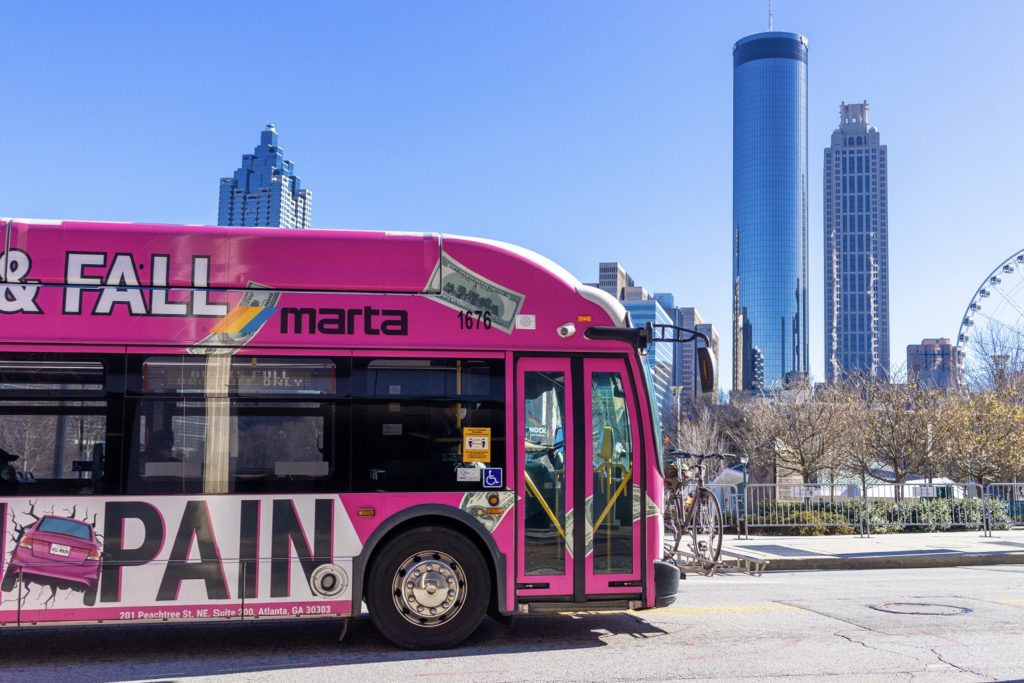
The bus and rapid transit system in Atlanta, GA is operated by the Metropolitan Atlanta Rapid Transit Authority (MARTA). The system includes a combination of bus and rail services that cover the city and its surrounding areas.
MARTA was established in 1965 and began operation in 1979. The system currently has 48 bus routes and 4 rail lines, with a total of 38 rail stations and 104 bus stops. The rail lines include the Red Line, Gold Line, Blue Line, and Green Line, which serve major destinations such as downtown Atlanta, Hartsfield-Jackson Atlanta International Airport, and the Georgia State University area.
The bus routes in the MARTA system serve a wide range of destinations, including residential areas, shopping centers, and major employment centers. The system also offers express bus services, which provide faster travel times for commuters traveling to and from downtown Atlanta.
Ridership on the MARTA system has been steadily increasing in recent years. In 2018, the system saw an average of over 402,000 weekday riders, with over 100 million total annual riders. This number has been growing in recent years, with an increase of over 6% in 2018 compared to the previous year.
One of the reasons for the increase in ridership is the expansion of the system in recent years. In 2017, MARTA opened the expansion of the Blue Line, which added four new stations and improved travel times for riders in the northern suburbs of Atlanta. In addition, the system has also undergone a series of upgrades, including the installation of new technology such as real-time information systems and contactless fare payment options.
Another factor that has contributed to the increase in ridership is the growing population in the Atlanta area. The city is experiencing a population boom, with an estimated population of over 6 million people in the metropolitan area. This has led to increased demand for public transportation options, as more people are looking for ways to get around the city.
The MARTA system also serves a diverse population, with riders from different backgrounds and income levels. The system offers discounted fares for seniors, students, and individuals with disabilities, and also participates in the Regional Reduced Fare Program, which allows low-income individuals to purchase discounted fares.
Despite the increase in ridership, the MARTA system still faces challenges. One of the biggest challenges is funding, as the system relies heavily on sales taxes for funding. This has led to limited expansion and maintenance of the system, as well as limited frequency of service on some routes.
Another challenge is the lack of coverage in certain areas of the city. The MARTA system primarily serves the city of Atlanta, with limited service in the surrounding suburbs. This leaves many residents in the suburbs without easy access to public transportation, and limits the ability of the system to serve the entire metropolitan area.
Despite these challenges, the MARTA system remains an important part of the transportation infrastructure in Atlanta. The system plays a vital role in providing access to jobs, education, and other opportunities for the city’s residents. The system’s continued growth and expansion will be crucial in addressing the transportation needs of the city and its residents. With the increasing number of commuters and visitors to the city, the MARTA system is expected to continue to play an important role in the transportation landscape of Atlanta for years to come.
